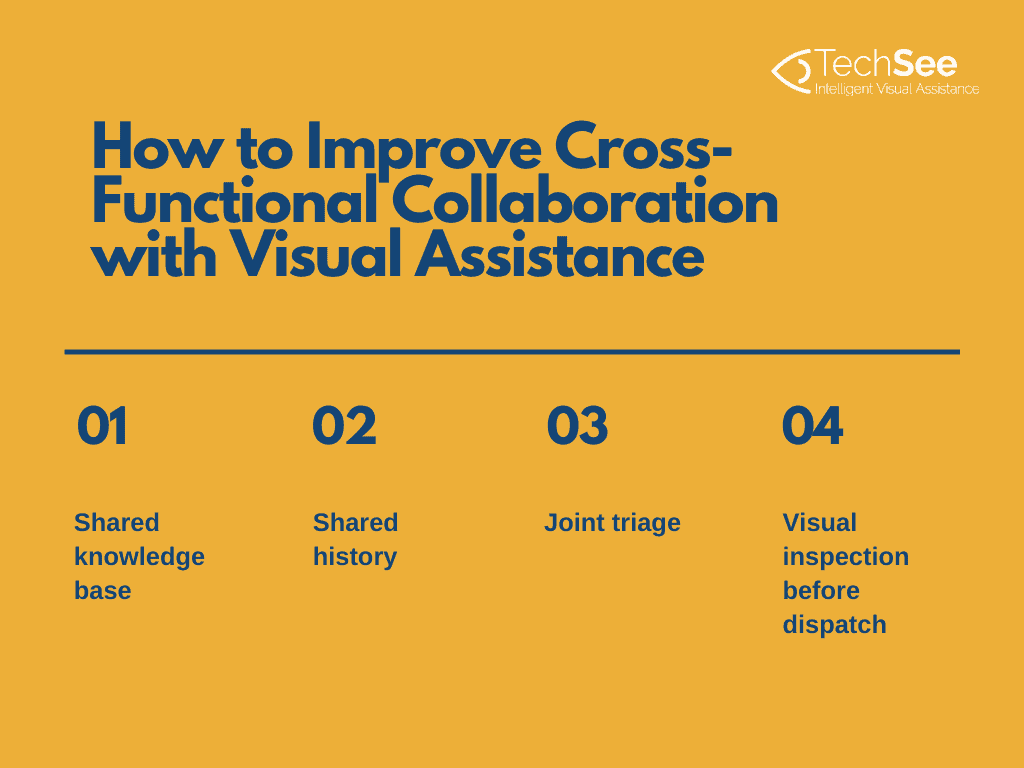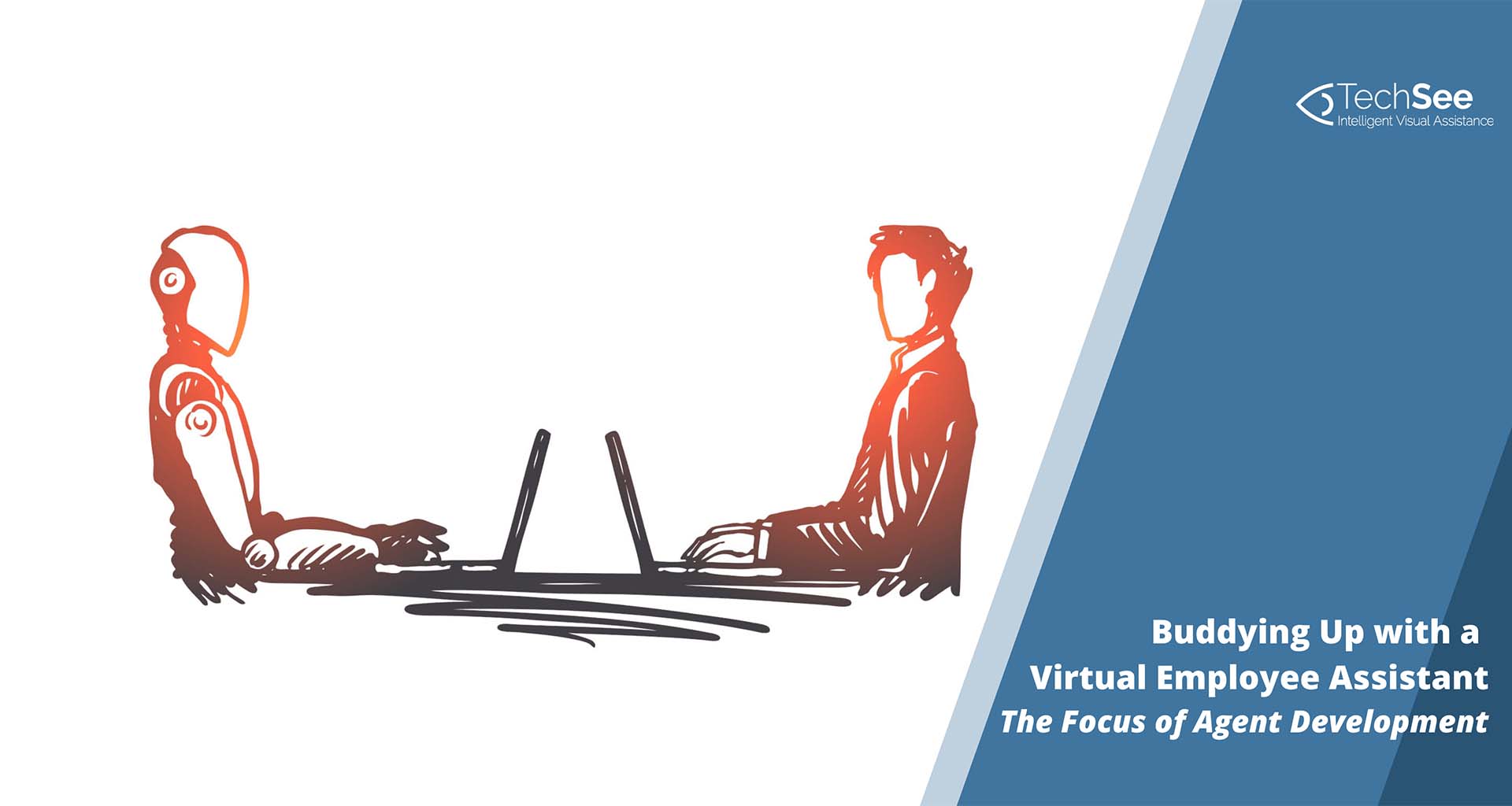Contents
- Contact Centers are Ready for Change
- Today’s Limited Virtual Employee Assistants
- Boost Efficiency with a Virtual Employee Assistant
- Building a Better VEA
- 4 Current Approaches to Agent Empowerment
- The Bigger, More Dynamic Picture: VEAs with Visual Engagement
- A Win-Win with Wider Capabilities
- Virtual Assistant vs Employee
- The Endgame: A Perfect Mix of Virtual and Human Interaction
The contact center industry continues to face extremely high agent turnover, with some call centers experiencing attrition rates as high as 100% in a single year. This high turnover presents a significant challenge to contact centers in terms of cost, productivity and morale. Therefore, it is not surprising that there’s an ongoing global trend towards fostering agent development and enhancing their day-to-day activities. Virtual Employee Assistants (VEA), or digital buddies, have been tapped as an effective solution to help contact centers both support and motivate their agents.
Contact Centers are Ready for Change
Today’s contact center agents are no longer satisfied with spending their days placating frustrated customers while under tremendous pressure to meet operational KPIs. They now demand more satisfying and empowering work experiences. With this in mind, Gartner’s “How CEC Agents Could Benefit From Having a Digital Buddy” recommends that contact centers invest in technology strategies that not only drive operational performance, but that boost agent empowerment and satisfaction.
Today’s Limited Virtual Employee Assistants
Current VEAs, such as Personik, focus mainly on helping employees engage with the company. They integrate with existing corporate infrastructure and communicate with employees via chat. They also handle employees’ needs such as:
- vacation requests
- HR forms
- IT issues, and
- on-demand learning.
Boost Efficiency with a Virtual Employee Assistant
Other digital assistants are commonly deployed to help with agent productivity. These often act as a first point of contact when it comes to executing simple and even relatively complex processes, offering decision support and freeing up agents to focus on higher-value tasks.
For example, Amazon’s Alexa for Business helps employees delegate tasks, while Nokia’s MIKA helps agents find answers as they perform complicated tasks or diagnose problems. In fact, Gartner had predicted that by 2021, 25% of digital workers would use a virtual employee assistant on a daily basis, up from less than 2% in 2019.
Building a Better VEA
Gartner’s report takes a panoramic view by outlining the need for custom-built VEAs that combine both of these aspects into a solution with the potential to revolutionize contact center operations. The goal of the virtual employee assistant would be to assist with all aspects of an agent’s job, from tasks and admin, to motivation and workflow improvement. By buddying up with a human agent to make his job easier and more satisfying, the VEA will help call centers increase agent empowerment.
The benefits of empowering staff with a virtual employee assistant include, for example:
- driving agent loyalty
- streamlining onboarding
- improving daily productivity, and
- helping the agent provide better overall customer experience.
Deploying the most effective, sustainable and scalable VEA would require the integration of multiple technologies. Examples of the necessary tech tools include interaction guidance, decision support, robotic process automation, workflow optimization and agent career path development. These tools all currently exist but cannot be found as a single off-the-shelf product.
4 Current Approaches to Agent Empowerment
Forward-looking customer service organizations have discovered various innovative tips on empowering their employees and enhancing their value to the organization.

Team-based models
With many basic transactional enquiries handled effectively by self-service channels, T-Mobile agents were struggling to meet their KPIs when handling more complex queries that couldn’t be dealt with by self-service. Recognizing an emerging opportunity, the company implemented the TEX (Team of Experts) model. Teams of reps sit together in shared spaces called pods and operate as sub-units, collaborating closely in order to solve customers’ issues. Agents are now able to build stronger relationships with specific customers and are measured on both individual and team performance, further encouraging teamwork.
The TEX model has already paid off for T-Mobile: in just three years, the company’s overall cost to serve is down 13%, its NPS has increased by more than half, and its customer churn rate is at an all-time low. Employees are more satisfied, with agent attrition and absenteeism way down.
Episode management
As explained by Bain & Company, episode management refers to the mindset of companies when it comes to customer experience. For every customer episode – paying a bill, getting technical support with activating a device, etc. – instead of focusing on a narrow set of numbers such as AHT, episode management looks at the overall outcome.
For example, if a customer is having trouble with an appliance, a rep may achieve an extremely short AHT, simply because he quickly dispatched a technician to fix the problem. However, if the overall episode had been considered, the interaction would have been negative. This is because the tech dispatch costs the company more and the customer is less than satisfied by having to wait for a resolution.
Companies that measure and hold reps accountable for the overall outcome of an episode, consider the emotional impact on customers, the frequency of the issue and overall company costs. Consequently, such enterprises find that they earn the loyalty of both their customers and agents.
Artificial intelligence-powered contact center tools
To reduce costs and alleviate pressure on agents, companies are increasingly turning to artificial intelligence (AI)-powered solutions. These help with automating activity in their contact centers and with agent empowerment. Current approaches to automation in contact centers are mainly focused on structured data, text and voice. With speech analytics, agents are equipped with a wide range of voice-based tools, enabling auto-recognition of accent, gender, and emotion. These systems also power conversational IVRs and voice-based virtual employee assistants.
Meanwhile, Natural Language Processing (NLP) algorithms have enabled AI-powered tools to grasp context, powering smart classification and routing of customer enquiries. Decision support tools help agents make faster, smarter decisions based on problem diagnoses, previous successful actions and other relevant contextual information.
Gamification
When gamification is introduced into a contact center environment, agents compete to complete objectives and outpace colleagues in specific metrics such as hours worked and average speed to answer. Rewards may include recognition on leaderboards, physical prizes, priority for preferred shifts or free parking. If a company’s culture supports healthy work rivalry, as reported by Microsoft, each individual is empowered to achieve more. Success lies in full transparency and comprehensive reporting to ensure a level playing field.
However, as far back as 2012, Gartner raised doubts about the long-term value of gamification, predicting that 80% of gamified applications would fail to meet business objectives because of poor design. While the jury is still out on the worth of the approach, a better angle from which to address agent motivation may be to address their real-life aspirations, rather than treating them as game pawns.
The Bigger, More Dynamic Picture: VEAs with Visual Engagement
Companies are continuing to make great strides in developing, empowering and supporting their agents. However, one promising channel that must be further explored is the implementation of visual data into virtual employee assistant capabilities.
Visual engagement represents the usage of a visual communication channel by an agent in order to better interact with a customer. Examples of communication channels include:
- live video
- recorded video
- photo stream, or
- photo chat messaging.
Contact centers that utilize live video assistance enable agents to see exactly what the customer sees. This effectively eliminates the lengthy back-and-forth verbal process inherent in auditory communications and builds agent-customer trust in the process.
Advanced AI technologies, such as computer vision and augmented reality, provide the ability to visualize the customer’s environment either offline or in real time. Using the AI technology, agents can point, annotate and visually guide the customer. This results in a faster and more effective call resolution, a more satisfying customer experience and empowered agents who are motivated to use innovative tools to succeed.
A Win-Win with Wider Capabilities
Combining the best elements of these approaches into a customized virtual employee assistant would result in a near-perfect agent support model. For example, VEAs might combine visual customer assistance with agent decision support tools, motivation and career guidance. These virtual employee assistants would enable agents to identify and resolve issues more quickly, while allowing them to engage on a more personal basis with the customer. The benefits of empowering staff in terms of loyalty and upselling are obvious. The enhanced virtual employee assistant positions the agent as a holistic customer ‘account manager’, just like in T-Mobile’s TEX model, rather than someone there to fix only a narrow range of issues.
This combination is used in Vodafone’s Welcome Team approach, which uses Big Data analysis to predict almost all potential onboarding issues. Here the visual dimension is key to empowering the agent to achieve more effective onboarding, unboxing, setup, troubleshooting and operational guidance.
Virtual Assistant vs Employee
The relationship between agents and virtual employee assistants must also be a two-way street. Agents should feel that they’re actively improving the performance of the VEA and contributing to the company’s knowledge base, according to the “crowdsourcing of expertise” principle. By applying social media principles, such as image sharing, the visual decision support tool can be considered not just a database of fixes, but a living, visual “wiki” of agent actions, tips, and career development.
The Endgame: A Perfect Mix of Virtual and Human Interaction
Contact center agents are acutely aware that their field is already undergoing rapid change in terms of the drive towards full automation. Providing agents with the most complete set of tools, embodied as virtual employee assistants, could help agents with their day-to-day activities, such as:
- handling repetitive tasks
- answering common questions
- gathering basic information, and
- routing customer service enquiries.
By entrusting virtual employee assistants with simple yet time-consuming tasks, especially when integrated with a visual dimension, agents can prioritize other more complex or strategic activities. The benefits of empowering staff are well documented and make agents feel more satisfied in their jobs. With this mix of virtual and human interaction, businesses can have the best of both worlds; self-service that alleviates pressure on agents and the human touch from expert, highly motivated “super-agents” when required.






